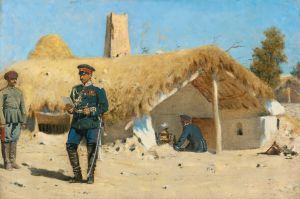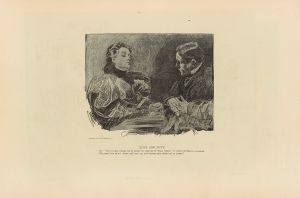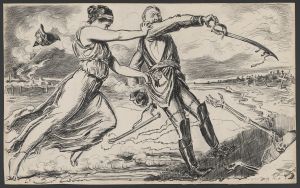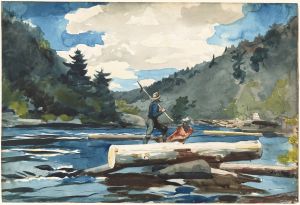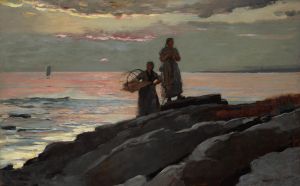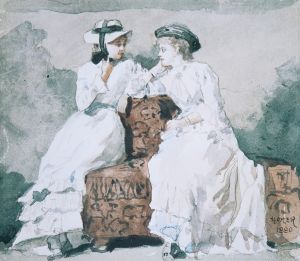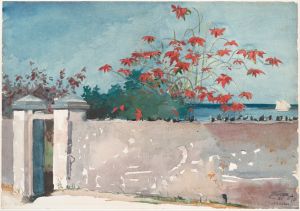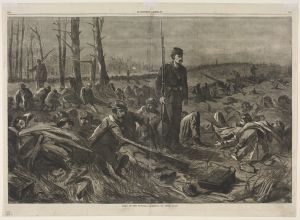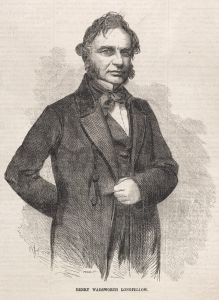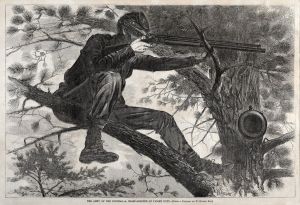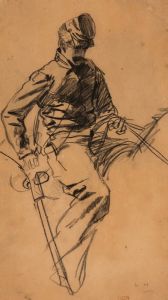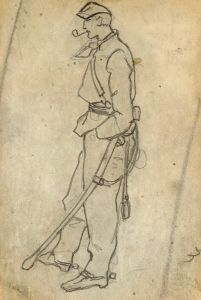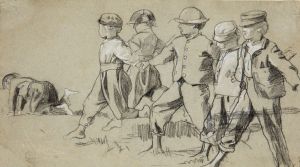
The Army of the Potomac – Our Outlying Picket in the Woods
A hand-painted replica of Winslow Homer’s masterpiece The Army of the Potomac – Our Outlying Picket in the Woods, meticulously crafted by professional artists to capture the true essence of the original. Each piece is created with museum-quality canvas and rare mineral pigments, carefully painted by experienced artists with delicate brushstrokes and rich, layered colors to perfectly recreate the texture of the original artwork. Unlike machine-printed reproductions, this hand-painted version brings the painting to life, infused with the artist’s emotions and skill in every stroke. Whether for personal collection or home decoration, it instantly elevates the artistic atmosphere of any space.
"The Army of the Potomac – Our Outlying Picket in the Woods" is a painting by the renowned American artist Winslow Homer, created in 1862. This work is part of Homer's early career, during which he gained recognition for his depictions of the American Civil War. Homer, who was born in 1836 in Boston, Massachusetts, became one of the most prominent figures in American art, known for his realistic and often poignant portrayals of American life and landscapes.
The painting captures a scene from the American Civil War, focusing on a solitary Union soldier standing guard in a wooded area. This soldier is part of the Army of the Potomac, a major Union force during the Civil War. The Army of the Potomac was responsible for many significant battles and campaigns in the Eastern Theater of the war, including the Battle of Gettysburg and the Siege of Petersburg. Homer's work provides a glimpse into the daily life and duties of soldiers during this tumultuous period in American history.
Homer's depiction is notable for its attention to detail and its ability to convey the isolation and vigilance required of soldiers on picket duty. Picket duty involved soldiers being stationed at the outermost line of an army's position to provide early warning of enemy advances. This was a crucial role, as it helped prevent surprise attacks and ensured the safety of the main force. The painting's setting in the woods adds to the sense of solitude and tension, as the soldier must remain alert in a potentially hostile environment.
Winslow Homer began his career as a commercial illustrator and later transitioned to painting. During the Civil War, he worked as an artist-correspondent for Harper's Weekly, a popular illustrated newspaper of the time. His firsthand experiences on the front lines informed many of his works, allowing him to capture the realities of war with authenticity and empathy. "The Army of the Potomac – Our Outlying Picket in the Woods" is one such example, reflecting Homer's ability to portray the human aspects of war.
The painting is executed in oil on canvas, a medium that Homer would continue to use throughout his career. His style during this period is characterized by a focus on realism and a subdued color palette, which effectively conveys the somber mood of the subject matter. Homer's work during the Civil War laid the foundation for his later achievements, as he continued to explore themes of nature, human struggle, and resilience.
Today, Winslow Homer is celebrated as one of America's greatest painters, and his Civil War works are considered important historical documents as well as significant artistic achievements. "The Army of the Potomac – Our Outlying Picket in the Woods" remains a testament to his skill in capturing the essence of a pivotal moment in American history, offering viewers insight into the experiences of those who lived through the conflict.





